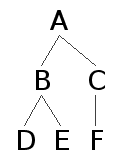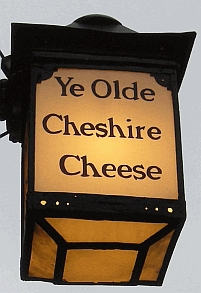2014-04-21 Mon
■ #1820. c-command [syntax][generative_grammar][terminology][ppcme2][ppceme][ppcmbe]
「#310. PPCMBE で広がる英語統語論の通時研究」 ([2010-03-03-1]) で,Penn Parsed Corpora of Historical English を紹介した.Helsinki Corpus をベースとしながらも拡張を加えた歴史英語コーパス群で,詳細に構文解析された Penn-Treebank format による統語ツリーもろとも検索できるのが最大の特徴である.タグや注釈の体系が複雑で,CorpusSearch なる特殊なプログラムを用いて検索する必要もあり,初心者が使いこなすには敷居が高いが,統語的に明確に規定された例文を集めるといった用途では,今のところ Penn 系の構文解析コーパス (PPC) にかなうものはない.
PPC の構文解析の理論的基盤は生成文法だが,用いられる術語は生成理論の特殊化したヴァージョンのものではなく,一般的・基本的なものなので,理論に精通していなくとも何とか利用はできる.例えば,CorpusSearch の命令群に,"Dominates", "iDominates" (=immediately dominates), "HasSister", "IsRoot" などがあるが,統語ツリーのいろはを知っていれば,これらの用語が指す統語関係を理解することは難しくない.
しかし,上に挙げたものよりも少し理論がかった命令に,"CCommands" というものがある.c-command あるいは c-統御とは,1980年代初期に発展した束縛理論 (binding theory) において広く言及された統語関係である.束縛理論は,UG (universal grammar) の一般原則のなかでも中核をなすものとして当時こぞって研究された理論であり,とりわけ再帰代名詞などに代表される照応形 (anaphora) ,代名詞,その他の名詞句と,それらの先行詞との関係を規定する原則を追究した.その理論的発展の過程で,とりわけ重要とされるようになった統語関係の1つが,c-統御である.ほかに,関連の深いものに束縛 (binding) と統率 (government) がある.
以下で,c-統御 (c-command) と束縛 (binding) について概説しよう.下の架空の統語ツリーにおいて,

・ B は C と F を c-統御している
・ C と F はともに B, D, E を c-統御している
・ D は E を,E は D を c-統御している
と言われる.定義風にいえば,「節点 X を支配している最初の枝分かれ節点が別の節点 Y を支配しているとき,X は Y を c-command する」(渡辺,p. 86).
生成文法で理論上 c-統御が重要視されたのは,再帰代名詞とそれが指す先行詞の関係を規定するために,c-統御という統語関係が決定的な役割を果たすことがわかってきたからだ.以下の2つの文を考えよう.
(1) *John's mother criticized himself.
(2) John's mother criticized herself.

非文の (1) では,"John" に相当する NP を支配している最初の枝分かれ節点は TP のすぐ下の NP であるから,"John" は "mother" を c-command していることにはなっても,"himself" を c-command していることにはならない."himself" の立場からいえば,"John" に c-command されていないことになる.このような場合,すなわち "himself" が "John" に束縛されていない場合には,照応が成り立たないというのが,英語統語論でのルールである.
一方,正文の (2) では,再帰代名詞 "herself" は "John's mother" を表す NP を先行詞としているが,この NP を支配している最初の枝分かれ節点は TP であるから,"John's mother" は "herself" を c-command していることになる."herself" の立場からいえば,"John's mother" に c-command されており,束縛されているので,照応が成り立つ.生成文法家は,c-統御,さらに束縛という統語関係の規程を通じて,英語の照応に関する一般原則が見いだされたと考えた.
PPC の話に戻ると,例えば his ouermoch fearinge of you のような名詞句を検索するのに,"CCommands" という命令により「代名詞が別の代名詞を c-統御しているような名詞句」という統語条件を設定すればよい.複雑な統語条件のもとで,かつ authentic な例文を取り出したいときに,PPC と CorpusSearch は威力を発揮する.
・ 渡辺 明 『生成文法』 研究社,2009年.
2014-02-12 Wed
■ #1752. interpretor → interpreter (2) [spelling][suffix][corpus][emode][hc][ppcme2][ppceme][archer][lc]
標記の件については「#1740. interpretor → interpreter」 ([2014-01-31-1]) と「#1748. -er or -or」 ([2014-02-08-1]) で触れてきたが,問題の出発点である,16世紀に interpretor が interpreter へ置換されたという言及について,事実かどうかを確認しておく必要がある.この言及は『英語語源辞典』でなされており,おそらく OED の "In 16th cent. conformed to agent-nouns in -er, like speak-er" に依拠しているものと思われるが,手近にある16世紀前後の時代のいくつかのコーパスを検索し,詳細を調べてみた.
まずは,MED で中英語の綴字事情をのぞいてみよう.初例の Wycliffite Bible, Early Version (a1382) を含め,33例までが -our あるいは -or を含み,-er を示すものは Reginald Pecock による Book of Faith (c1456) より2例のみである.初出以来,中英語期中の一般的な綴字は,-o(u)r だったといっていいだろう.
同じ中英語の状況を,PPCME2 でみてみると,Period M4 (1420--1500) から Interpretours が1例のみ挙った.
次に,初期近代英語期 (1418--1680) の約45万語からなる書簡コーパスのサンプル CEECS (The Corpus of Early English Correspondence でも検索してみたが,2期に区分されたコーパスの第2期分 (1580--1680) から interpreter と interpretor がそれぞれ1例ずつあがったにすぎない.
続いて,MEMEM (Michigan Early Modern English Materials) を試す.このオンラインコーパスは,こちらのページに説明のあるとおり,初期近代英語辞書の編纂のために集められた,主として法助動詞のための例文データベースだが,簡便なコーパスとして利用できる.いくつかの綴字で検索したところ,interpretour が2例,いずれも1535?の Thomas Elyot による The Education or Bringing up of Children より得られた.一方,現代的な interpreter(s) の綴字は,9の異なるテキスト(3つは16世紀,6つは17世紀)から計16例確認された.確かに,16世紀からじわじわと -er 形が伸びてきているようだ.
LC (The Lampeter Corpus of Early Modern English Tracts) は,1640--1740年の大衆向け出版物から成る約119万語のコーパスだが,得られた7例はいずれも -er の綴字だった.
同様の結果が,約330万語の近現代英語コーパス ARCHER 3.2 (A Representative Corpus of Historical English Registers) (1600--1999) でも認められた.1672年の例を最初として,13例がいずれも -er である.
最後に,中英語から近代英語にかけて通時的にみてみよう.HC (Helsinki Corpus) によると,E1 (1500--70) の Henry Machyn's Diary より,"he becam an interpretour betwen the constable and certein English pioners;" が1例のみ見られた.HC を拡大させた PPCEME によると,上記の例を含む計17例の時代別分布は以下の通り.
| -o(u)r | -er(s) | |
|---|---|---|
| E1 (1500--1569) | 2 | 1 |
| E2 (1570--1639) | 3 | 5 |
| E3 (1640--1710) | 0 | 6 |
以上を総合すると,確かに16世紀に,おそらくは同世紀の後半に,現代的な -er が優勢になってきたものと思われる.なお,OED では,1840年の例を最後に -or は姿を消している.
2013-03-25 Mon
■ #1428. ye = the [palaeography][spelling][thorn][th][pub][alphabet][graphemics][ppcme2][ppceme][ppcmbe][corpus]
「#13. 英国のパブから ye が消えていくゆゆしき問題」 ([2009-05-11-2]) で,ye や ye が定冠詞 the の代わりに用いられる擬古的な綴字について触れた.
þ (thorn) と y との字形の類似による混同は中英語期から見られたが,この混乱がいわば慣習化したのは þ が衰退してからである.þ が廃れていったのは,「#1329. 英語史における eth, thorn, <th> の盛衰」 ([2012-12-16-1]) や「#1330. 初期中英語における eth, thorn, <th> の盛衰」 ([2012-12-17-1]) で確認したように,Helsinki Corpus の時代区分によるME第4期 (1420--1500) 以降である.それに呼応して,擬古的な定冠詞 ye は近代英語期に入ってから頻度を増してきた.OED を参照すると,ye の使用は中英語から17世紀にかけて,とある.
では,中英語から初期近代英語にかけて,具体的にどの程度 ye が用いられたのだろうか.これを調べるために PPCME2, PPCEME, PPCMBE のPOSファイル群で "ye/D" を検索してみた.MEからは1例のみ,EModEから1259例,LModEから5例が挙がった.各コーパスはおよそ130万語,180万語,100万語からなるが,総語数を考えずとも,傾向は歴然としている.初期近代英語で急激に現われだし,一気に衰微したということである.ただし,PPCEME の1259例のうち975例は,The Journal of George Fox (1673--74) という1作品からである.ほかには10例以上現われるテキストが4つあるのみで,残りは20テキストに少数例ずつ散らばっているにすぎないという分布ではある.隆盛を極めたというよりは,地味な流行といった感じだろうか.
先日,ロンドンを訪れた際に,145 Fleet St の老舗パブ "Ye Olde Cheshire Cheese" と 42 Ludgate Hill の "Ye Olde London" の看板を撮影してきた.残念ながらここでエールを一杯やる機会はなかったけれども,別のパブでは一杯(だけではなく)やりました.


2013-03-20 Wed
■ #1423. 初期近代英語の3複現の -s (2) [verb][conjugation][emode][corpus][ppceme][ppcbme][number][agreement][analogy][3pp]
「#1413. 初期近代英語の3複現の -s」 ([2013-03-10-1]) の記事の続き.前の記事では,PPCEME による検索で,3複現の -s の例を50件ほど取り出すことができたと述べたが,文脈を見ながら手作業で整理したところ,全52例が確認された(データのテキストファイルはこちら).
PPCEME では,E1 (1500--1569), E2 (1570--1639), E3 (1640--1710) の3期が区分されているが,その区分ごとに3複現の -s の生起数を示すと以下のようになる(各期のコーパスの総語数も示した).
| Period | Tokens | Wordcount |
|---|---|---|
| E1 (1500--1569) | 13 | 567,795 |
| E2 (1570--1639) | 18 | 628,463 |
| E3 (1640--1710) | 21 | 541,595 |
| Total | 52 | 1,737,853 |
Queen Elizabeth I's Boethius (E2), Thomas Middleton's A chaste maid in Cheapside (E2), Celia Fiennes's journeys (E3) などの特定のテキストに数回以上生起するとはいえ,全体として少ない生起数ながらも,およそむらなく分布しているとは言えるかもしれない.例文を眺めてみると,以下のように主語と動詞の倒置がみられるものがいくつかあり,現代英語の「there is + 複数名詞」のような構文を想起させる.
・ and after them comys mo harolds,
・ Here comes our Gossips now,
・ Now in goes the long Fingers that are wash't Some thrice a day in Vrin,
さて,Lass (166) に3複現の -s について関連する言及を見つけたので,紹介しておこう.Lass は,3複現の -s の起源について,単数に比べれば時代は遅れたものの,北部方言からの伝播だと考えているようだ.
The {-s} plural appears considerably later than the {-s} singular, and if it too is northern (as seems likely), it represents a later diffusion. The earliest example cited by Wyld ([History of Modern Colloquial English] 346) is from the State Papers of Henry VIII (1515): 'the noble folk of the land shotes at hym'. It is common throughout the sixteenth and seventeenth centuries as a minority alternant of zero, and persists sporadically into the eighteenth century.
16,17世紀を通じて行なわれていたということは,上記の PPCEME からの例で確かに認められた.なお,後期近代英語をカバーする PPCMBE で18世紀以降の状況を調べてみると,こちらの6例が挙がった.しかし,実体の数と観念の上で焦点化される数との不一致の例と読めるものも含まれており([2012-06-14-1]の記事「#1144. 現代英語における数の不一致の例」を参照),後期近代英語では3複現の -s は皆無に近いと考えてよさそうだ.
・ Lass, Roger. "Phonology and Morphology." 1476--1776. Vol. 3 of The Cambridge History of the English Language. Ed. Roger Lass. Cambridge: CUP, 1999. 56--186.
2013-03-10 Sun
■ #1413. 初期近代英語の3複現の -s [verb][conjugation][emode][corpus][ppceme][number][agreement][analogy][3pp]
標記について Baugh and Cable (247) に触れられており,目を惹いた.3単現ならぬ3複現における -s は,中英語では珍しくない.中英語の北部方言では,「#790. 中英語方言における動詞屈折語尾の分布」 ([2011-06-26-1]) の下の地図で示したように,直説法3人称複数では -es が基本だった.しかし,初期近代英語の標準変種において3複現の -s が散見されるというのは不思議である.というのは,この時期の文学や公文書に反映される標準変種では,中英語の East Midland 方言の -e(n) が消失した結果としてのゼロ語尾が予想されるし,実際に分布として圧倒的だからだ.しかし,3複現の -s は確かに Shakespeare でも散見される.
この問題について,Baugh and Cable (247) は次のように指摘している.
Their occurrence is also often attributed to the influence of the Northern dialect, but this explanation has been quite justly questioned, and it is suggested that they are due to analogy with the singular. While we are in some danger here of explaining ignotum per ignotius, we must admit that no better way of accounting for this peculiarity has been offered. And when we remember that a certain number of Southern plurals in -eth continued apparently in colloquial use, the alternation of -s with this -eth would be quite like the alternation of these endings in the singular. Only they were much less common. Plural forms in -s are occasionally found as late as the eighteenth century.
ここで,3複現の -s が北部方言からの影響ではないとする Baugh and Cable の見解は,Wyld, History of Modern Colloquial English, p. 340 の言及に負っている.むしろ,この時期の3単現の -s 対 -th の交替が,複数にも類推的に飛び火した結果だろうと考えている.なお,Görlach (89) は,方言からきたものか単数からきたものか決めかねている.
この問題を考察するにあたって,何はともあれ,初期近代英語において3複現の -s なり -th なりが具体的にどのくらいの頻度で現われるのかを確認しておく必要がある.そこで,The Penn-Helsinki Parsed Corpus of Early Modern English (PPCEME) によりざっと検索してみた.約180万語という規模のコーパスだが,3複現の -s の例は50件ほど,3複現の -th の例は60件ほどが挙がった(結果テキストファイルは左をクリック).年代や文脈などの詳細な分析はしていないが,典型的な例を少し挙げておく.
・ and all your children prayes you for your daly blessing.
・ but the carving and battlements and towers looks well;
・ then go to the pot where your earning bagges hangs,
・ as our ioyes growes, We must remember still from whence it flowes,
・ Ther growes smale Raysons that we call reysons of Corans,
・ now here followeth the three Tables,
・ And yf there be no God, from whence cometh good thynges?
・ First I wold shewe that the instruccyons of this holy gospell perteyneth to the vniuersal chirche of chryst.
・ and so the armes goith a sundre to the by crekes.
・ And to this agreith the wordes of the Prophetes, as it is written.
・ Also high browes and thicke betokeneth hardnes:
・ Baugh, Albert C. and Thomas Cable. A History of the English Language. 5th ed. London: Routledge, 2002.
・ Görlach, Manfred. Introduction to Early Modern English. Cambridge: CUP, 1991.
2011-05-05 Thu
■ #738. inclusive superlative [superlative][contamination][syntax][corpus][ppceme]
昨日の記事「構文の contamination」 ([2011-05-04-1]) で最後に取り上げた "inclusive superlative" について,BNCweb でどのくらいヒットするか試してみた."(most _AJ0 | _AJS) (_{N})* of (any)? other" で検索すると,以下の7例を取り出すことができた(赤字は引用者).
- Chang's speed was the best of any other player.
- Perhaps the most notable of other attempts to describe parents in this fashion was undertaken by Earl S. Schaefer.
- This percentage is the largest of any other constituency in England.
- But centuries of migration, conquest, occupation, intermarriage, trade and cultural exchange - not to mention the tendency of artists to copy or reinterpret the most successful facets of other artists' work - have eroded much of this exclusivity.
- Commander Keen has the largest fan club of any other shareware game available.
- 'In proportion to the kiwi's size the egg is the largest of any other bird.
- I say in particular our union because everyone here knows we probably have the largest and best training programme of any other union in Britain today.
初期近代英語にも見られたということなので,The Penn-Helsinki Parsed Corpus of Early Modern English (PPCEME) でざっと調べてみると,John Fryer (b. c1650, d. 1733) なる人物の東洋旅行記に次の1例があった.
They yet retain a Warlike Disposition, being still accounted the best Gunners here of any other places in Persia;
この妙な構文の起源と歴史を探るには,混交のもととなっている2つの構文 comparative + than any other と superlative + of all の頻度や文脈をまず洗い出す必要があるだろう.
2010-09-01 Wed
■ #492. 近代英語期の強変化動詞過去形の揺れ [emode][verb][conjugation][variation][corpus][ppceme]
近代英語期には,動詞の過去形や過去分詞形に数々の異形態があったことが知られている.特に母音の変化 ( ablaut, or vowel gradation ) によって過去形,過去分詞形を作った古英語の強変化動詞に由来する動詞は,-ed への規則化の傾向とも相俟って変異の種類が多かった.
現代英語でも過去形や過去分詞形に変異のある動詞はないわけではない.例えば bid -- bid / bade / bad -- bid / bidden, prove -- proved -- proved / proven, show -- showed -- shown / showed, sow -- sowed / sown -- sown / sowed などがある.しかし,近代英語期の異形態間の揺れは現代英語の比ではない.18世紀の著名な規範文法家 Robert Lowth (1710-87) ですら揺れを許容しているほどだから,それだけ収拾がつかなかったということだろう ( Nevalainen, pp. 93--94 ) .
今回はこの問題に関して,[2010-03-03-1]で紹介した PPCEME ( Penn-Helsinki Parsed Corpus of Early Modern English, second edition ) により,主要な動詞(とその派生・複合動詞)の過去形について異形態をざっと検索してみた.単に異綴りと考えられるものもあるが,明らかに語幹母音の音価の異なるものもあり,揺れの激しさが分かるだろう.カッコ内は頻度.
・ awake : awaked (1), awoke (3)
・ bear : bar (6), bare (133), barest (2), beare (1), bore (24)
・ begin : be-gane (12), be-gayne (1), began (281), began'st (1), begane (13), begann (1), beganne (27), begannyst (1), begayn (1), begayne (1), begon (1), begun (10)
・ break : brak (6), brake (60), brakest (2), break (2), broake (7), brok (4), broke (49), brokest (1)
・ come : bacame (1), becam (5), became (79), become (1), cam (475), came (2170), camest (11), camst (4), com (27), come (55), comst (1), ouercame (4), ouercome (2), over-cam (1), overcame (2), overcome (1)
・ drink : drancke (3), dranckt (1), drank (19), dranke (21), dronke (3), drunk (1), drunke (2)
・ eat : ate (15), eat (11), eate (12), ete (2)
・ fall : befel (1), befell (6), fel (15), fele (1), fell (306), felle (4), ffell (1)
・ find : fande (4), ffond (1), ffonde (1), ffound (1), find (1), fond (2), fonde (2), found (344), founde (63)
・ get : begat (67), begate (60), begot (3), begott (2), forgat (3), forgate (2), forgot (8), forgote (1), forgott (2), gat (10), gate (15), gatt (4), gatte (1), got (101), gote (23), gott (23)
・ give : forgaue (2), gaue (261), gauest (9), gave (364), gavest (12), gayff (4), gayffe (2), geve (1), misgaue (1)
・ help : help'd (2), help't (1), helped (5), helpt (1), holp (1), holpe (1)
・ know : knew (419), knewe (88), knewest (3), knewyst (1), know (1), knowe (1), knowethe (1), knue (1), knwe (1)
・ ring : rang'd (1), rong (1), rung (1), runge (1)
・ run : ran (77), rane (7), rann (3), ranne (38), run (12), rune (1), runn (1)
・ see : saw (627), saw (1), sawe (237), sawest (14), sawiste (1), see (5)
・ sing : sang (7), sange (5), song (11), songe (3), sung (13)
・ sink : sanke (1), sunke (1)
・ speak : bespake (2), spak (2), spake (318), spoak (1), spoake (8), spock (1), spoke (61), spokest (2)
・ spring : sprang (1), sprange (5), spronge (1), sprung (3), sprunge (1)
・ swear : sware (55), swoare (1), swore (56)
・ take : betoke (1), betook (4), betooke (4), mistook (1), mistooke (2), ouer-tooke (1), ouertoke (2), ouertooke (3), overtook (2), overtooke (2), take (1), taked (3), tok (2), toke (333), tokened (1), tokest (2), took (296), tooke (333), tooke (1), undertook (8), undertooke (2), vnd=er=tooke (1), vndertooke (2)
・ write : wrat (1), wrate (7), wret (32), wrett (49), writ (19), write (2), writt (8), writte (1), wrot (21), wrote (106), wrote (1), wrott (7), wrotte (3), wryt (1), wryte (1), wrytt (2)
近代英語期の強変化動詞の過去形,過去分詞形の揺れは様々に研究されているが,Nevalainen の References から以下の2件の研究を見つけたのでメモしておく.
・ Nevalainen, Terttu. An Introduction to Early Modern English. Edinburgh: Edinburgh UP, 2006.
・ Gustafsson, Larisa O. Preterite and Past Participle Forms in English, 1680--1790. Studia Anglistica Upsaliensia 120. Uppsala: Uppsala U, 2002.
・ Lass, Roger. "Proliferation and Option-Cutting: The Strong Verb in the Fifteenth to Eighteenth Centuries." Towards a Standard English, 1600--1800. Ed. Dieter Stein and Ingrid Tieken-Boon van Ostade. Berlin and New York: Mouton de Gruyter, 1993. 81--113.
Powered by WinChalow1.0rc4 based on chalow